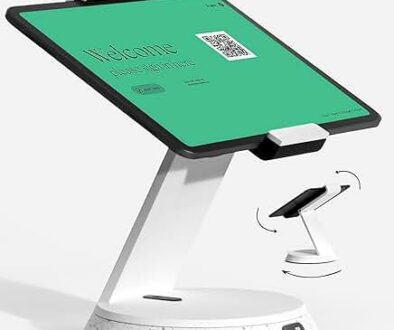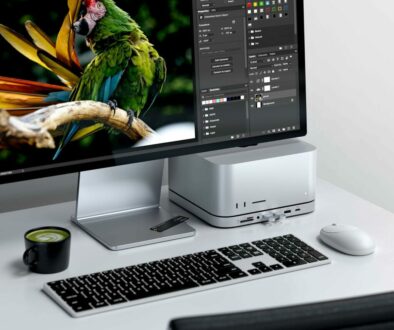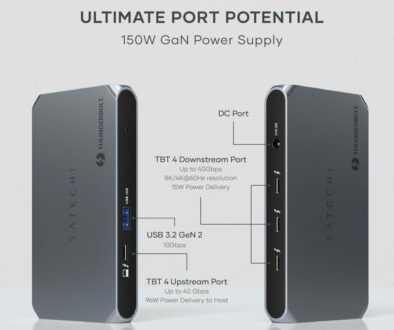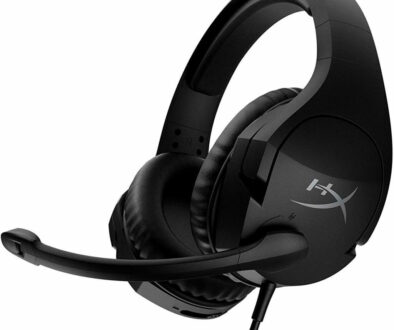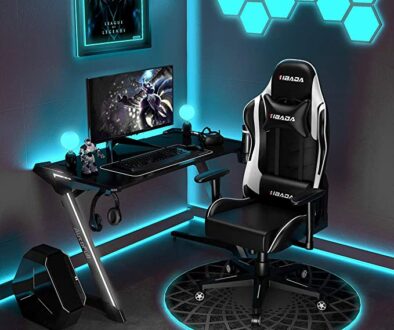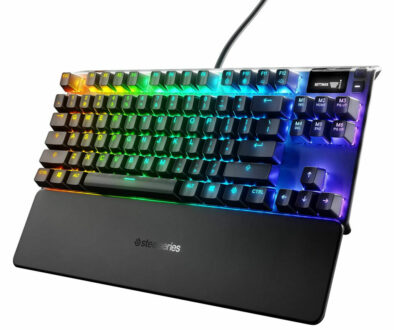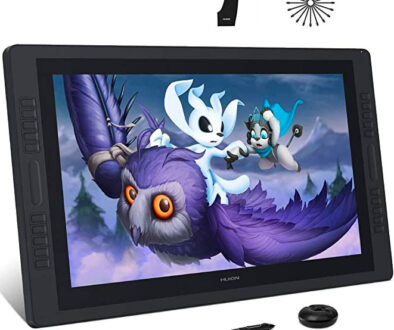Top Solar Generators and Power Stations for Outdoor Tech Users
As outdoor adventures become more tech-dependent, the need for reliable off-grid power has never been greater. Whether you’re hiking through remote trails, camping deep in the wilderness, or preparing for emergency situations, keeping your devices charged can be a challenge. Here are the top solar generators and power stations to keep you going.
Why Solar Generators Are Essential for Outdoor Tech Enthusiasts
Traditional battery packs have limitations — especially when you’re far from an outlet for days at a time. That’s where solar generators and portable power stations come in. These compact, rechargeable energy solutions harness the power of the sun to keep your smartphones, GPS units, drones, laptops, lights, and even small appliances running no matter where you are.
Designed for rugged use, efficiency, and sustainability , today’s solar-powered generators offer a smarter way to stay powered outdoors. In this guide, we’ll walk you through the best models available , tailored specifically for outdoor tech users, adventurers and digital nomads who demand reliable energy beyond the grid.

Who Should Be Using a Solar Generator or Portable Power Station?
Solar generators and portable power stations aren’t just for survivalists and extreme campers — they’re becoming essential tools for a wide range of outdoor enthusiasts and professionals. Here’s who benefits most from owning one:
A. Backpackers & Hikers
Whether you’re navigating with a GPS device or capturing memories with your smartphone, having a lightweight power source ensures you stay connected and safe on long treks.
B. Campers & Vanlifers
From LED lighting to charging phones and powering mini coolers, these units provide the convenience of home energy without being tied to the grid.
C. Bikers & Cyclists
Long-distance riders often rely on GPS navigation and communication tools. A compact solar generator ensures your gear stays powered between stops.
D. Fishermen & Boaters
Waterproof and rugged models are perfect for boating trips or lakeside fishing expeditions where access to electricity is limited.
E. Outdoor Photographers & Vloggers
Drones, action cameras, and mirrorless setups consume a lot of power. A high-capacity power station keeps your kit running all day long.
F. Emergency Preppers
Natural disasters and blackouts can leave you without power for days. Solar generators offer peace of mind as a reliable backup energy source.
G. Travelers & Digital Nomads
Exploring remote destinations? A solar generator gives you the freedom to work and create anywhere — even if there’s no Wi-Fi or wall outlet in sight.
H. Overlanders & RVers
For those living life on the road, these systems support everything from fridges to CPAP machines, making them indispensable for long-term travel.
No matter your adventure style, there’s a solar generator or portable power station that fits your needs — and we’ve rounded up the best ones for 2025.
What to Look for in a Solar Generator or Portable Power Station
Before diving into our top picks, it’s important to understand what makes a great solar generator or portable power station — especially when choosing one that fits your specific outdoor lifestyle.
1. Battery Capacity (Wh) – How Much Power Do You Need?
Measured in watt-hours (Wh) , battery capacity determines how much energy your unit can store. Smaller units (200–400Wh) are good for phones and lights, while larger models (1000Wh+) can run laptops, mini-fridges, and even CPAP machines.
2. Solar Input Compatibility – Charging with the Sun
Look for units that accept input from portable solar panels . Some include MPPT (Maximum Power Point Tracking) charge controllers, which optimise solar efficiency and reduce charging time.
3. Output Ports – Which Devices Can You Power?
Make sure the unit includes the right mix of:
- USB-A and USB-C PD ports for smartphones and tablets
- AC outlets for laptops and small appliances
- DC ports or carports for 12V accessories like fridges or compressors
4. Device Compatibility – From Phones to Fridges
Check whether the unit can power your specific gear. For example:
- Smartphones/tablets : ~10–30Wh per full charge
- Laptops : ~60–100Wh per charge
- CPAP machines : ~300–600Wh per night
- Mini-fridges : ~300–800Wh per day
5. Portability & Weight – Easy to Carry, Pack, and Store
If you’re hiking or traveling light, choose a model under 10 lbs with a compact, foldable design. Larger units may require a backpack or duffel bag.
6. Durability & Weather Resistance – Built to Last
Outdoor-rated units should feature:
- IP ratings (like IP65) for dust and water resistance
- Shockproof casing to survive drops and rough terrain
- Overheat protection for safe operation in direct sunlight
7. Built-in Flashlight & SOS Mode – Safety First
Many models include LED flashlights or emergency SOS signals — useful during nighttime hikes or crisis scenarios.
8. Recharge Options – Solar, Wall, or Car Charger?
The best units offer multiple recharging options , including:
- Solar panels (for off-grid use)
- Wall adapters (for home charging)
- Car chargers (for road trips and overlanding)
9. Battery Type – Lithium-ion vs LFP
- Lithium-ion : Lighter and cheaper, but shorter lifespan
- LFP (Lithium Iron Phosphate) : Heavier but lasts longer and performs better in extreme temps
10. Price vs Performance
While budget models can meet basic needs, investing in a higher-end unit often pays off with better longevity, expandability, and performance.
Top Picks – Best Solar Generators & Portable Power Stations in 2025
Power Your Adventures Off-Grid with Reliable Solar Energy. Now that you know what to look for, let’s look at the best solar generators and portable power stations available in 2025 — each chosen based on real-world performance, battery capacity, portability, and value.
1. Best Overall – Jackery Explorer 500 + SolarSaga 100W Panel
The Jackery Explorer 500 paired with the SolarSaga 100W solar panel is a versatile and user-friendly combo perfect for campers, photographers, and digital nomads. The Explorer 500 offers 518Wh of lithium-ion battery power , enough to charge a smartphone over 30 times or run a small mini-fridge for several hours.
- Output Ports : 2x AC outlets, 2x USB-A, 1x USB-C PD, 1x carport
- Recharge Time : ~7 hours via solar | ~6 hours via wall
- Weight : 13.2 lbs (power station)
- Pros : Lightweight, quiet operation, clean AC power
- Cons : Limited expandability compared to others.
Ideal for weekend adventures and light fieldwork.

2. Most Portable – EcoFlow River 600 + 110W Solar Panel
If you’re looking for something compact but still powerful, the EcoFlow River 600 (592Wh) is an excellent choice. At just 13.7 lbs , it’s one of the most travel-friendly options on this list. When paired with the 110W solar panel , it recharges in as little as 5–6 hours of direct sunlight .
- Battery Capacity : 592Wh
- Output Ports : 3x AC outlets, 2x USB-A, 1x USB-C PD, 1x DC port
- Pros : Fast recharge, lightweight, modular design
- Cons : Slightly more expensive than budget models
Perfect for hikers, solo travellers, and minimalist adventurers.

3. ALLPOWERS Portable Power Station R600
For campers, travelers, or weekend off-grid enthusiasts looking for speed, versatility, and modern features, the ALLPOWERS R600 is a smart, compact solution. With 299Wh of capacity and a powerful 600W output, it’s perfect for running multiple devices—from laptops to mini-fridges—without the bulk.
- Battery Type: Lithium iron phosphate (LFP) – ultra-safe, long-life (3500+ cycles)
- Output Ports: 2x AC (600W), 2x USB-C (100W), 2x USB-A (18W), 1x 12V car port, 1x 15W wireless charger
- Recharge Time: ~1 hour via wall outlet (400W), ~2 hours via 220W solar input
- Pros: Super-fast charging, wide port selection, UPS support, wireless charging, durable LFP battery
- Cons: Slightly lower capacity than some competitors in its price range
Ideal for digital nomads, short camping trips, or as a fast-charging backup power source at home, the R600 combines speed, safety, and smart design into one efficient unit.

4. High Capacity Hero – EcoFlow Deltra 3 Plus
Built for serious power needs and long-term reliability, the EF ECOFLOW DELTA 3 Plus (1024Wh) delivers exceptional performance with fast charging, smart energy management, and up to 5kWh of expandable capacity. Whether you’re powering a home office, off-grid retreat, or emergency setup, this is a powerhouse you can count on—every day for the next 10 years.
- Battery Type: Lithium iron phosphate (LFP) – 4000+ cycles, 10-year lifespan, IP65-rated (splash/dust/oil-proof)
- Output Ports: Powers 13 devices at once; includes high-wattage AC, USB, and DC ports
- Recharge Time: 80% in 40 mins (AC 1500W or Smart Generator), 80% in 1 hr via solar or car alternator, 100% in 70 mins (solar), 1.3 hrs (alternator), 56 mins (Smart Generator), Hybrid AC + solar = fastest possible recharge
- Pros: Fastest multi-source recharging on the market, Expandable to 5kWh, Smart app control with energy tracking and TOU scheduling, True UPS with 10ms switchover
- Cons: Higher upfront cost, Heavier due to robust build and capacity
Perfect for powering homes, workstations, or off-grid living, the DELTA 3 Plus is a future-proof energy solution that combines rugged performance with smart, sustainable energy management.

5. Best for Emergency Use – BLUETTI Portable Power Station AC180
For serious power users, off-grid adventurers, or anyone needing reliable backup during outages, the BLUETTI AC180 delivers robust performance with rapid recharge and high output. With a 1152Wh capacity and up to 1800W (boostable to 2700W) of output power, it’s built to run demanding appliances and essential devices alike.
- Battery Type: Lithium iron phosphate (LFP) – safe, durable, and rated for thousands of cycles
- Output Ports: 9 total – includes AC, USB, car port, and more (supports up to 2700W in boost mode via app)
- Recharge Time: ~1 hour via 1440W AC, ~3 hours via 500W solar
- Pros: Massive output, ultra-fast wall charging, UPS backup (20ms switch), app control, reliable solar input
- Cons: Larger size/weight, may be overkill for basic needs
Best suited for home backup, van life, or remote work sites, the AC180 combines power, flexibility, and future-ready features into one rugged, portable unit that’s as comfortable off the grid as it is in your living room.

6. Rugged Pick – GRECELL T300 288Wh Solar Generator
Lightweight, efficient, and feature-packed, the GRECELL T300 288Wh Solar Generator is ideal for campers, travelers, and emergency preparedness. With a compact design and 330W pure sine wave output (600W surge), it powers essentials like laptops, CPAP machines, lights, and mini-fridges without the bulk.
Battery Type: Lithium-ion with upgraded Battery Management System (BMS) – safe and protected from overload, short-circuit, and overcharging
Output Ports: 1x AC (330W), 1x USB-C PD (60W), 3x USB-A QC 3.0 (18W), 1x 12V car port, 2x DC outputs
Recharge Time: Via wall, car, or solar (MPPT enabled for optimal solar charging)
Pros: Lightweight and compact, fast USB-C 60W charging, silent cooling, affordable
Cons: Limited AC output for high-powered appliances
Perfect for weekend camping, road trips, and blackouts, the GRECELL 288Wh is a portable powerhouse that balances affordability, convenience, and safety—all in a carry-friendly form.

7. For Multi-Day Trips – Anker SOLIX C1000 Portable Power Station
Fast, compact, and impressively powerful, the Anker SOLIX C1000 (1056wh) is designed for serious adventurers, emergency preppers, and smart home users. With 1056Wh capacity, lightning-fast charging, and up to 2400W output, it powers everything from coffee makers to power tools — all in a unit 15% smaller than typical 1kWh stations.
- Battery Type: Lithium iron phosphate (LFP) – durable with 3,000+ cycles and 10-year lifespan
- Output Ports: 9 ports total, with SurgePad technology supporting 2400W output
- Recharge Time: 80% in 43 mins, 100% in 58 mins (AC); 1.8 hours via 600W solar input
- Pros: Ultra-fast charging, compact design, app control, solar-ready, powers 99% of appliances
- Cons: Premium price point
Ideal for power-hungry devices on the go or at home, the SOLIX C1000 is a next-gen portable power station combining performance, sustainability, and intelligent control in one ultra-efficient package.

8. Best for CPAP Users – Anker SOLIX F2000 Portable Power Station
A heavy-duty power hub for serious users, the Anker SOLIX F2000 (PowerHouse 767) delivers 2048Wh of clean, reliable energy with rapid recharging, long-term durability, and smart power management. With 2400W output (boosting to 3600W with SurgePad), 12 output ports including an RV port, and a 10-year lifespan, it’s the perfect all-in-one backup or mobile power solution.
- Battery Type: Lithium iron phosphate (LFP) – over 3,000 cycles, 10-year lifespan with InfiniPower tech
- Output Ports: 12 total – including 4 AC ports, 3 USB-C, 2 USB-A, 2 car outlets, and 1 RV port (2400W max, 3600W peak with SurgePad)
- Recharge Time: 0–80% in 1.4 hours with HyperFlash fast charging
- Pros: Ultra-durable build, massive output capacity, RV-compatible, fast charging, excellent port variety, 5-year full warranty
- Cons: Heavier and bulkier due to high capacity, premium price point
Ideal for RV enthusiasts, off-grid setups, home backup, or powering multiple high-wattage devices simultaneously, the SOLIX F2000 is a long-term, worry-free energy solution designed to meet today’s and tomorrow’s demands.

Expert Tips for Getting the Most Our of Your Solar Generator
To make sure you get the most life, efficiency, and reliability out of your solar generator or portable power station, here are some essential tips:
Know Your Daily Power Usage
Before heading out, calculate how much power your devices consume using watt-hour ratings or built-in apps. This helps you choose the right-sized generator and avoid running out of juice mid-adventure.
Optimise Sun Exposure
Position your solar panel perpendicular to the sun and away from shade for maximum efficiency. Tilting the panel to match the sun’s angle can significantly reduce charging time.
Understand Recharge Limitations
While solar is convenient, it’s often slower than wall or car charging. Plan accordingly — especially if you’re in cloudy or rainy areas.
Pair with a Smart Battery Bank
Use a smaller battery bank or power brick to store energy from your generator. This allows you to keep your main unit safely stored while using smaller, more accessible power sources during the day.
Maintain and Store Properly
Keep your generator in a dry, cool place when not in use. Charge it to around 50% before storage to preserve battery health and longevity.
Troubleshoot Common Issues
If your unit isn’t charging:
- Check solar panel connections
- Ensure the MPPT controller is functioning
- Clean dust or debris from panel surfaces
- Test with a different device to rule out compatibility issue
Choosing the Right Solar Generator or Power Station for Your Adventure
Whether you’re heading out for a weekend of camping, living life on the road, or preparing for emergencies, a solar generator or portable power station can make all the difference in staying powered and productive while off-grid.
From the Jackery Explorer 500 + SolarSaga 100W panel, our top pick for versatility and ease of use, to the EcoFlow Delta 3 Plus , which delivers powerhouse performance for pro users — there’s a solution for every kind of adventurer.
The key is matching your needs with the right specs:
- Battery capacity for how many devices and how long you’ll be offline
- Portability if you’re hiking or backpacking
- Durability if you’re exposed to harsh weather
- Expandability if you plan to scale your setup over time
With the right unit, you can confidently explore deeper into the wild, travel smarter, and stay prepared — no wall outlet required. If you found this guide helpful, feel free to share it with fellow adventurers, travelers, and preppers. And don’t forget to subscribe to ColourMyTech.com for more tech-savvy outdoor gear guides, reviews, and tips!



